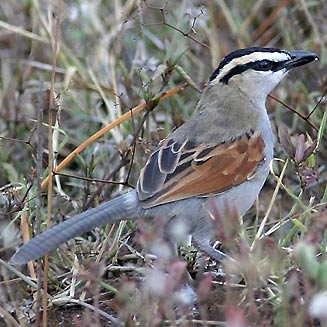
Tchagra senegala
SUBFAMILY
Malaconotinae
TAXONOMY
Lanius senegala Linnaeus, 1776, Senegal. About 12 races described,
but a few poorly differentiated. Variation concerns
size, coloration of back and underparts, and coloration and
shape of superciliary stripe.
OTHER COMMON NAMES
French: Tchagra а tкte noire; German: Senegaltschagra; Spanish:
Chagra.
PHYSICAL CHARACTERISTICS
7.8–9 in (20–23 cm); on average 1.9 oz (54 g). Relatively large
with a long, graduated tail and a heavy black bill; sexes are
similar. Characteristic black crown and black stripe through
eye; white, prominent supercilium. In nominate, upperparts are
gray brown; tail is dark fringed and tipped white; underparts
are pale gray. Juveniles are similar to adult, but duller with a
mottled crown, buff eyebrow, and paler bill. The Arabian race
percivali is the darkest one, relatively similar to the North
African race cucullata, also darker than nominate; on the contrary
remigialis from Chad to Sudan is very pale with almost
pure white underparts.
DISTRIBUTION
Rather a coastal species in northwestern Africa from Morocco
to northern Libya (race cucullata). Nominate occurs from
Senegambia to Sierra Leone. Other races widespread in sub-
Saharan Africa, except in the Horn, the Congo basin, and the
southwestern area of the continent.
HABITAT
Wide range of semi-open habitats dotted with bushes, thickets,
and isolated trees; sometimes occurs in forested habitats, in
Ethiopia, up to 9,800 ft (3,000 m); also in plantations, parks,
and gardens.
BEHAVIOR
The male defends a rather small territory covering about 10
acres (4 ha). Generally secretive; likes to keep to inside of
bushes, but song of warbled whistles betrays its presence.
Also conspicuous during display flights, when it can climb up
to 50 ft (15 m) before gliding downward in full song toward
another perch. Spends much of its time hopping on the
ground where most prey is caught, particularly near bases of
bushes and trees. Only local movements are known and only
in a few areas.
FEEDING ECOLOGY AND DIET
Arthropods, mainly insects, particularly grasshoppers and beetles.
Small reptiles and amphibians, as well as berries, are also
taken.
REPRODUCTIVE BIOLOGY
Monogamous, occurs singly or in pairs. The nest is a shallow
cup, built in a bush or small tree generally between 1.6 and 6.5
ft (0.5 and 2 m) above the ground. A normal clutch contains
two or three eggs (rarely four), which are apparently incubated
by both sexes, but probably mainly by female, for about 14
days. Over the vast range, laying may begin in all months with
local peaks, possibly favored by early rains. Normally only one
clutch. Young leave the nest when they are about 16 days old.
CONSERVATION STATUS
Not threatened. A few isolated races like percivali in the southwestern
Arabian peninsula, might, however, deserve to attract
the attention of conservationists.
SIGNIFICANCE TO HUMANS
None known.
Photo Gallery of - Black-crowned tchagra
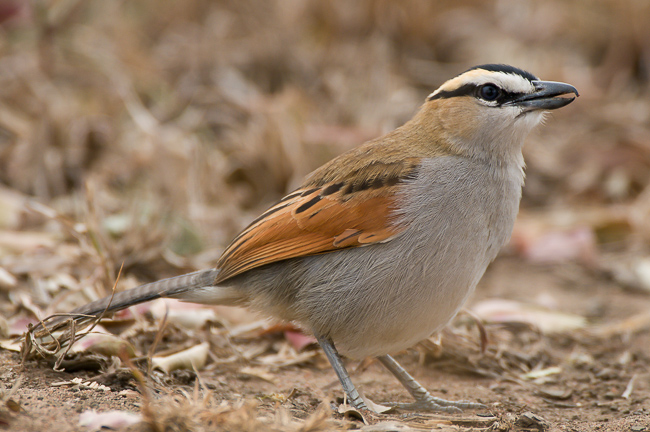
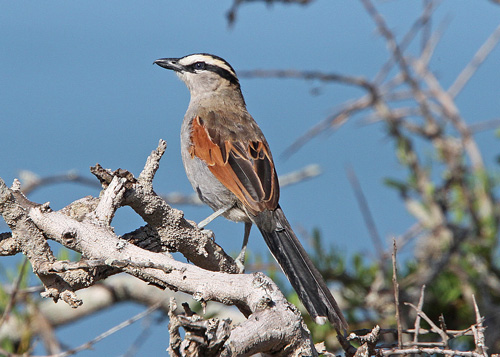
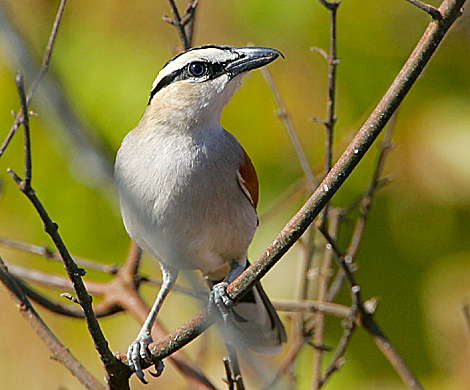
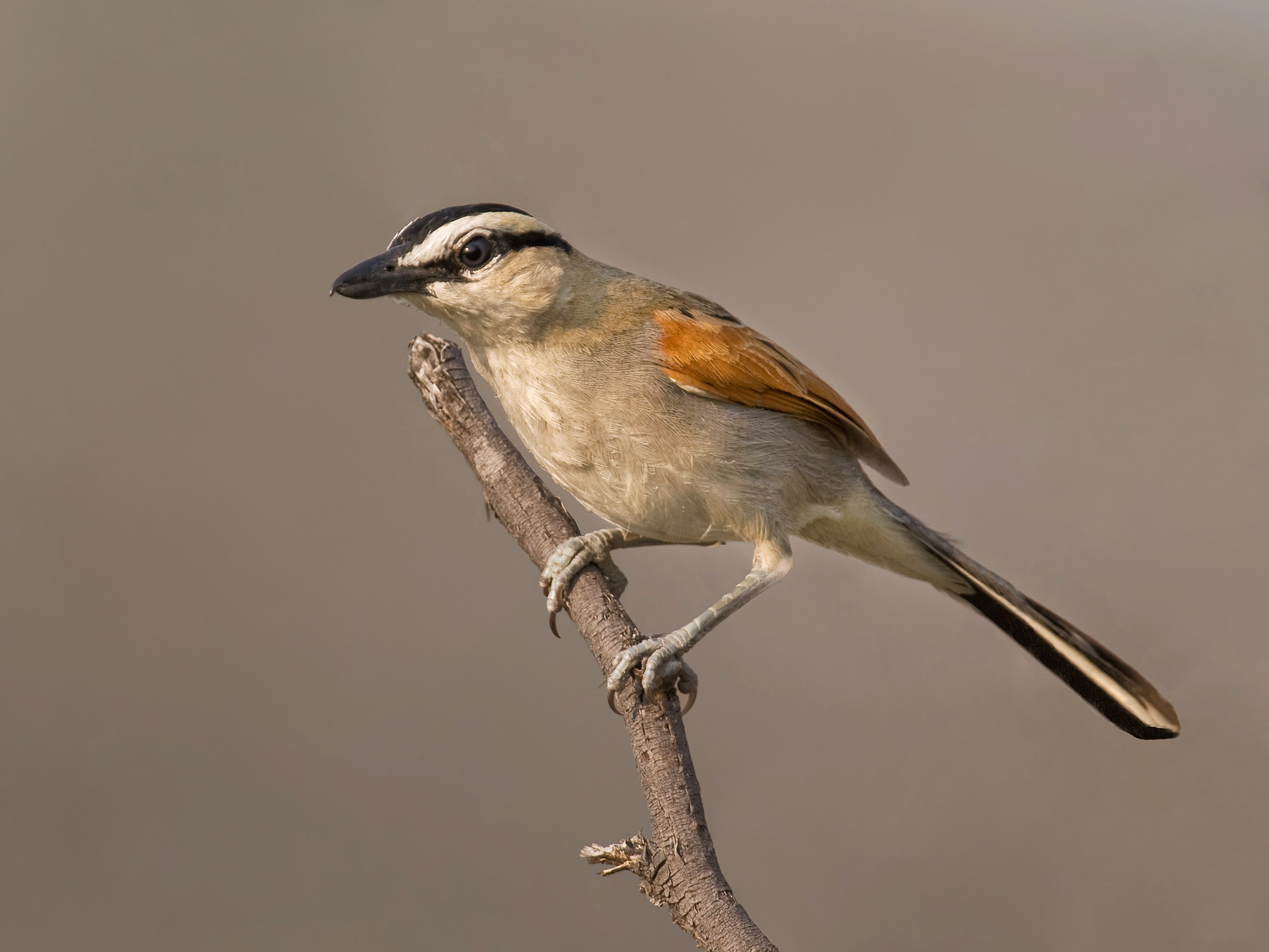
 Animalia Life
Animalia Life